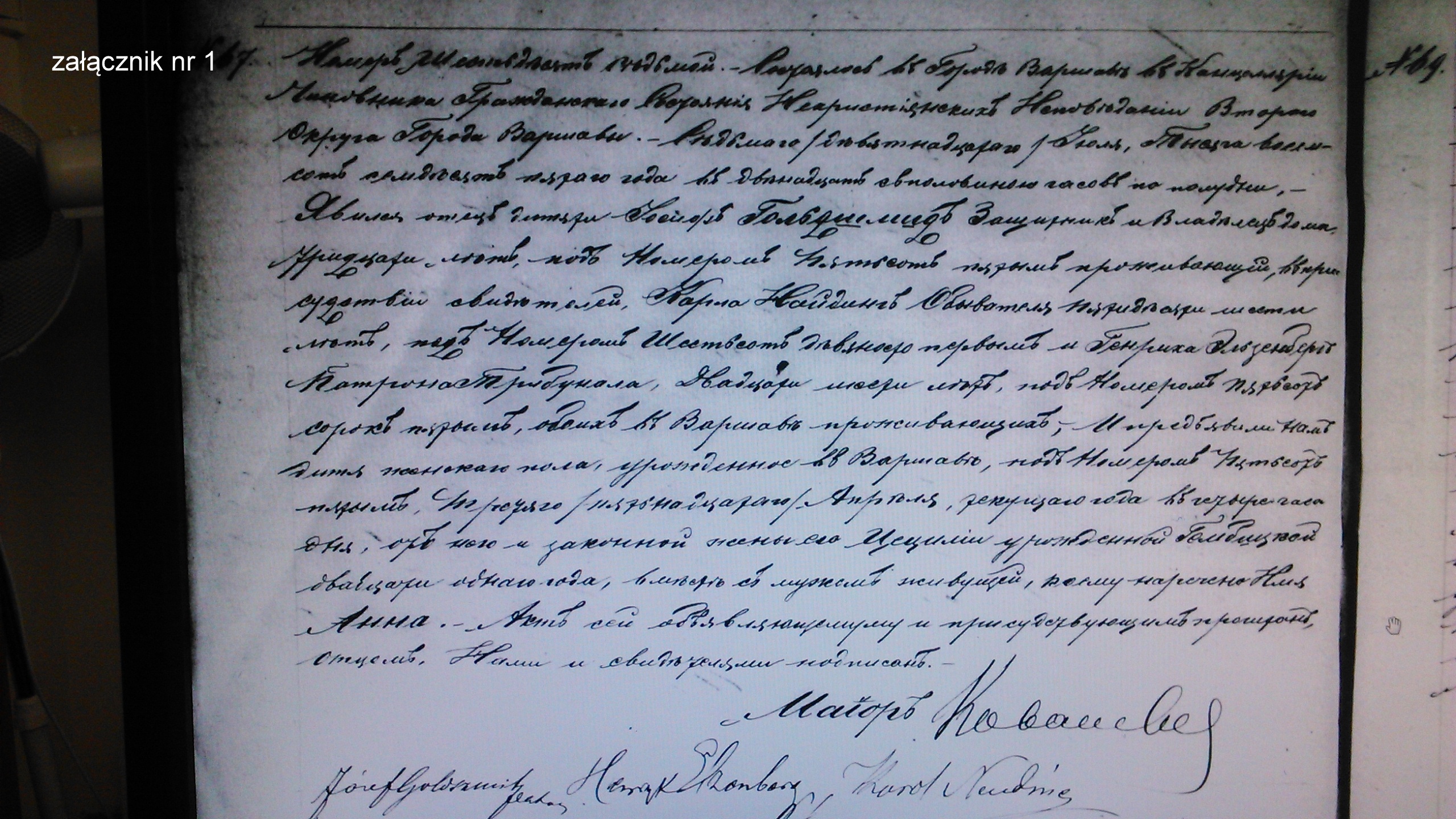Anna Goldszmit
Henryk Goldszmit’s sister
The daughter of Józef Goldszmit and Cecylia née Gębicka, born on 15 April 1875 in Warsaw; died probably in 1942 in the German extermination camp in Treblinka.
Only her birth certificate has been preserved. Most of the information concerning her life comes from the accounts of other people. Anna was a professional sworn translator; she could speak several languages, including French. She married Józef Lui, who committed suicide in 1909 and was buried in Warsaw – the facts were announced among others by his wife, so we can assume that she left for a longer stay in Paris only after his death. The news of her mother’s death reached her there. Thus, in 1920, she returned to Poland. According to Maria Falkowska’s research, in the years 1922–1926, she often visited Korczak’s orphanage, Dom Sierot (Biuletyn ŻIH 1997, No. 1). Between 1932 and 1939, Anna lived with her brother at 2 Żurawia Street, and then, until the outbreak of the war, at 8 Złota Street. She worked as a translator. Her brother said that she:
is a pedantic officer, always willing to renounce personal benefits for the sake of the cause. She proved it many times in the intimate affairs of her clients. It happened sometimes that in order to find some technical term in a foreign language, she would call people and offices, visit libraries and chambers. Foreign companies asked her to translate their price lists, brochures, contracts, and cost estimates. At the brink of war, she translated a propaganda brochure entitled Onturista. (Letter to Abram Gepner as of 25 March 1942)
She stayed in the Warsaw ghetto during the German occupation. According to the account given by Michał Wróblewski, a carer at Korczak’s orphanage, in 1942, she was transported from Umschlagplatz in Warsaw to the extermination camp in Treblinka: “The huge square, the crowd and the SS-officer with a whip. He, like the evil archangel, decided who went to the carriage to die, and who looked fit enough to work. Then, I saw Korczak’s sister on the side of death” (Życie Warszawy 1992, No. 186).




